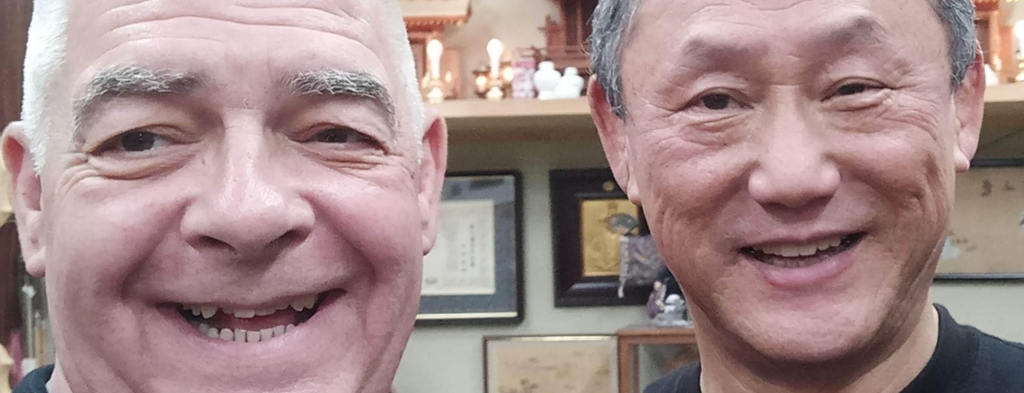
I am not very fond of spiders, but I like Nagato sensei’s Taijutsu.
Nagato sensei is the master of Mochikaeru, (1) Whatever you do, traps he traps you as if in a giant spiderweb.
Mochikaeru is his particular way to let you in his sphere of movement and to give back pain in exchange. Using his mastery of distance, he puts you off balance. When you think you have him, you end up “glued” into his spiderweb. All his body is playing against you: hands, elbows, legs, eyes. In fact, his entire body is scrutinizing you. Spiders have six eyes, and sometimes I guess him too. When you are Nagato sensei’s Uke, don’t forget his body is his eyes.
Apart from Taijutsu, he also speaks a lot during the long breaks. This Mondō is a special moment of questions and answers. When you ask anything, he will give his take on the problem you are having. It is also a sweet moment where he tells us many details about Sōke and their life before the Bujinkan went worldwide. Being 72-year-old, he is one of the key witnesses of the rise of the Bujinkan. Of how a small dōjō of eight mats, with about a dozen “meat-bags” became this sizeable international organization. (3) (4) (5)
In a recent Mondō, Nagato sensei that the Bujinkan is “blood, sweat and tears” until fifteenth Dan. After that, it is more about being happy. What is difficult is to train alternating hard and soft movements. This balance between hard and soft is challenging to do when you are Uke.
He also said that with age, we have to train softer. The goal of the Bujinkan is to be happy, not to destroy yourself. I can remember the training in the 90s’, and I assure you that Sōke is much softer than before. Life is about permanent change and adaptation.
Nagato sensei said that Sensei evolved a lot because he has been changing all the time. As a result, he is not changing but evolving. Sensei is like the reflection of the moon on the river; always different but always the same. As Thich Nhat Hanh puts it, “The river must be calm to reflect the full moon. (6)
Permanent changes in Sōke’s Budō makes it challenging to follow his steps. We have to catch his tail and go where he is going, letting him lead the way. Nagato sensei added that “Catching and keeping the horse’s tail is easy. But Sōke is a dragon, so it is more difficult to stay attached to the tail.”
In Taijutsu and in life, you achieve happiness and success through changes. And Mochikaeru is part of it.
My best student told me once, “The Bujinkan is like a country led by a recognized leader. The goal is to learn to be happy, and permanent change is giving us this freedom.”
Be Mochikaeru, a “dōjō frog” willing to become a prince of Budō. (7)
Change and be happy!
1 持ち帰る, Mochikaeru: to bring back; to carry home; to take out (e.g., food)
2 問答, Mondō: questions and answers; dialogue
3 Noguchi sensei said that at the beginning training was in Sensei’s clinic, a room with only 8 mats. They emptied it before class, and they had to avoid tripping on a 1-step platform on the side.
4 The first group was: Ishizuka, Tanemura, Manaka, Muramatsu, Kobayashi, Nagato, Oguri, Senō, Noguchi.
5 Meatbags: Each time you speak with the Japanese Dai Shihan, they say that Sensei was using them as “meat-bags.” He was not even trying to teach. He was working to understand the techniques. And it was excruciating. Noguchi sensei said that young Hatsumi weighted over 100 kg, was very bulky, and powerful.
6 Thich Nhat Hanh
7 モチ蛙, Mochikaeru: motivation of the frog (to become a prince of Budō).
